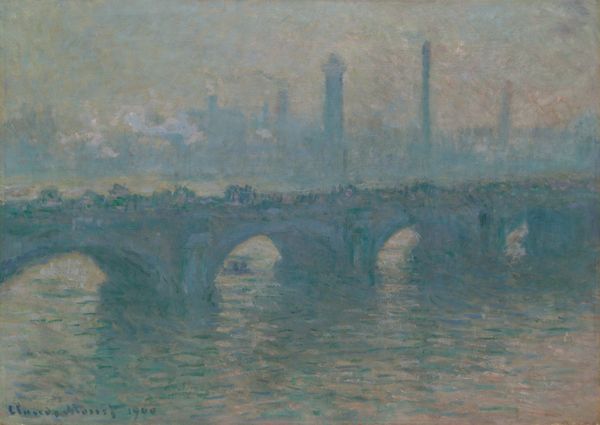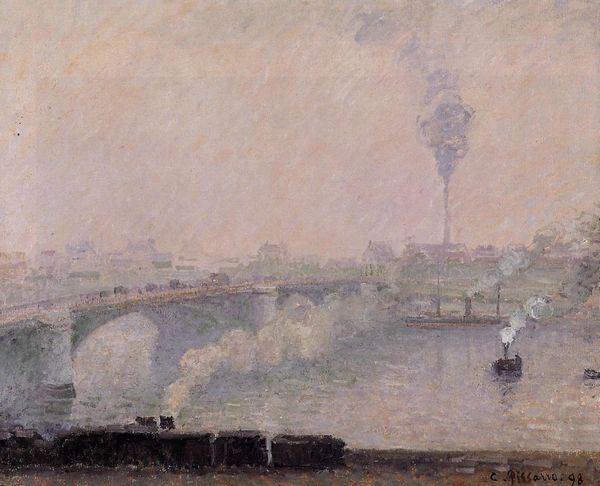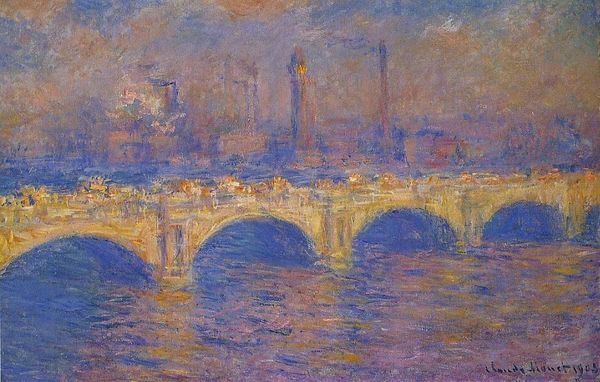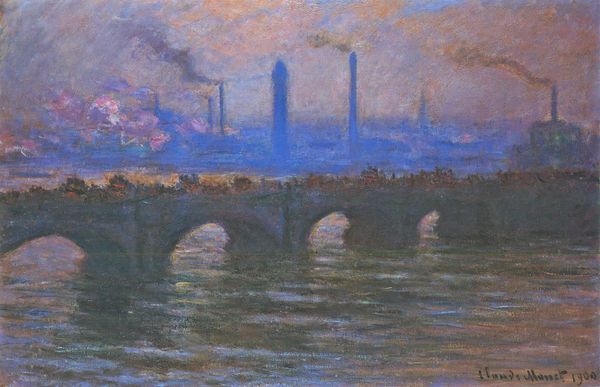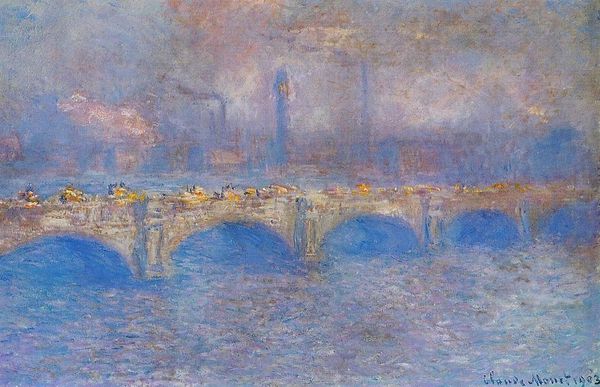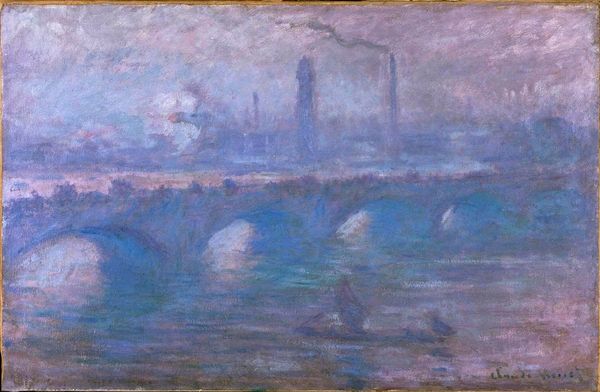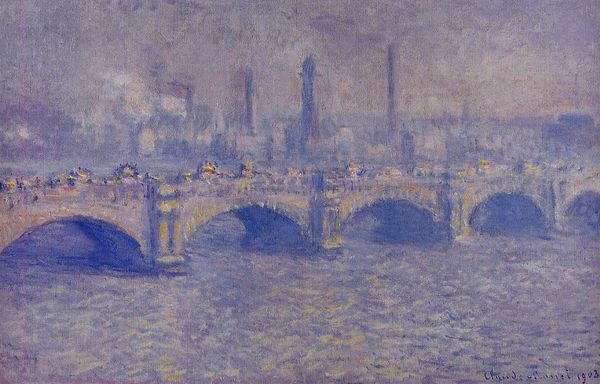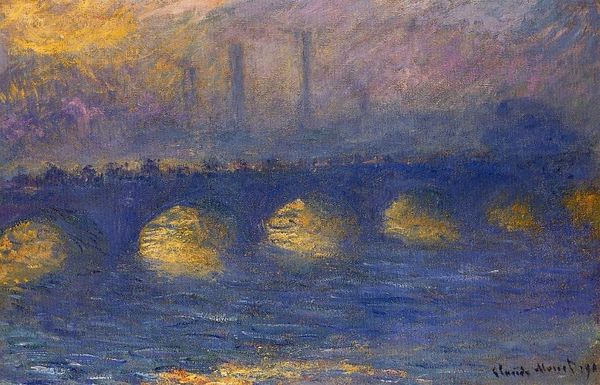
#
abstract expressionism
#
abstract painting
#
landscape
#
impressionist landscape
#
possibly oil pastel
#
oil painting
#
acrylic on canvas
#
seascape
#
paint stroke
#
painting painterly
#
watercolor
Copyright: Public Domain: Artvee
Curator: Monet's "Waterloo Bridge, Gray Day," painted in 1903, offers a captivating glimpse into early 20th-century London, rendered in his signature impressionistic style. Editor: The color palette is muted and hauntingly beautiful. It feels as though the whole scene is being viewed through a veil of mist. The hazy industrial atmosphere certainly speaks to a specific era. Curator: Absolutely. Monet began this series of paintings of the Waterloo Bridge during his extended stays in London between 1900 and 1904. The city's unique atmosphere, especially the fog, greatly intrigued him. London's atmosphere was quite unlike the clear skies of France where he generally painted. Editor: And one might add that the atmospheric effects here are hardly incidental. The haze, produced by London's burgeoning industry, quite literally shapes the scene. Curator: Precisely! What's interesting is how Monet uses visible brushstrokes to depict not just the bridge itself but also the effects of light and pollution on the water and air. Note the delicate layering of blues, grays, pinks, and oranges to capture the diffused sunlight filtering through the fog. Editor: I can’t help but think of the human cost involved in producing this particular aesthetic. Consider the lives and labor conditions connected to all that industrial haze in the sky. Curator: That's a valid point. It's crucial to remember the social and environmental implications of such industrial progress. Monet’s work can serve as a point of departure for a more profound consideration of industrialization and its impacts. Editor: It really compels us to consider the relationship between art, history, and the ethics of representation. Monet shows us an ephemeral scene but perhaps inadvertently captures a wider historical reality about social inequalities and environmental issues that linger today. Curator: Ultimately, his artistic focus was light and atmosphere, an endeavor that in itself changed art and our perception of the world. Editor: Still, acknowledging the full scope of its context allows us to have a richer understanding and appreciation of Monet's painting, both aesthetically and critically.
Comments
No comments
Be the first to comment and join the conversation on the ultimate creative platform.

